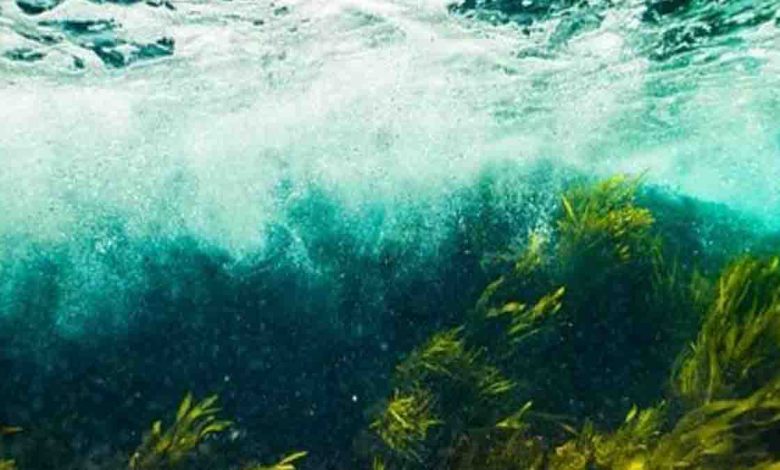Seaweed can help combat Covid-19

Known for its myriad properties from being anti-oxidants, dietary fiber, essential amino acids, food to bio-stimulants and carbon sequestration, seaweed is now being seen as an effective immune-therapy to fight Covid-19.
The observation by the Indian marine scientists from the ICAR-Central Institute of Fisheries Technology (CIFT) that the seaweed contains medical components that can be effective to combat the pathogen has drawn the attention of the World Health Organisation (WHO) too.
It has now posted their article published in the Current science on its website to help the pandemic hit countries to take a cue about the potential of marine plant found on the coastal zones.
In fact, the WHO recognistion has come just at a time when India has outlined an ambitious blueprint for seaweed industry in the coastal States to ensure sustainable livelihood to the local inhabitants as well as tackle climate change threats.
One of the easily accessible and most abundant live species present in the marine ecosystem, derivatives of seaweed is already known to have many medicinal-nutraceutical properties. “Several polysaccharides isolated from red and green seaweeds have been evaluated for its antiviral characteristics and found to have ability to inhibit the initial attachment of virus to the host cells which in turn effectively block the viral entry to human body,” said Ashish Jha, Suseela Mathew and CN Ravishankar from the CIFT in the study.
Carrageenan, a sulphated polysaccharide from red seaweed has already been tried as a therapeutic agent for respiratory illness like common cold, influenza virus H1N1. In vitro study shows that iota-carrageenan is active against novel pandemic H1N1/2009 influenza. The study also shows that use of sulphated polysaccharide increase the secretions of interferon and interleukins suggesting that it is a strong immune-stimulator, said the scientists.
In view of its immense potential, they proposed that sulphated polysaccharide can be a potent molecule to fight against Covid pandemic, hence a candidate molecule to be studied against SARS-CoV-2.
In fact, the study holds importance in the context of India which has recently outlined an ambitious blueprint for seaweed industry even as the Government in the Budget 2021-22 approved setting up of a multi-purpose seaweed park in Tamil Nadu.
While the seaweed can be potential candidate for an effective immune-therapy to fight Covid-19, these ‘wonder plants of the sea’ are being used from being a good source of colloidal materials used as gelling agents, emulsifiers, stabilisers, in pharmaceutical, cosmetic and food products. Hence, a good source of livelihood for the coastal communities hit by climate change threats.
To cash in its potential of being labour intensive vocation, efforts are on to set up cooperatives particularly women/fisherwomen to enhance their livelihood, said Sundeep Kumar Nayak, MD of the National Cooperative Development Cooperation (NCDC). He informed that steps are afoot to tie-up up with the Asian pacific countries for technological and marketing intervention to ensure value edition and quality to make the country’s presence felt in the global market which is estimated to shot up to USD 26 billion by 2026.
Presently, 96.3 percent of seaweed aquaculture is concentrated in six Asian countries China (with over 54.0 percent of production), Indonesia, the Philippines, Korea, Japan and Malaysia while India stands nowhere despite being bestowed with 7,500 km coastline.
India’s seaweed cultivation production is just about 20,000 tonnes, valued around USD 500 million. “This is one area which should take on the high priority level. The aim is to achieve seaweed production at 11.2 lakh tones by 2025,” added Dr Rajeev Ranjan, the then Union Fisheries Department Secretary while speaking at an international webinar on entrepreneurship development on ‘Seaweed Business by Cooperatives’ held on January 28.
It was jointly organized by Department of Fisheries, LINAC-NCDC, Department of Agriculture, Cooperation& Farmers Welfare, and Bangkok-based NEDAC. National and global experts from India and countries like Canada, Phillipines and Vietnam among a few others participated at the international webinar.
Dr Ranjan, who is now Chief Secretary of Tamil Nadu said that among some 844 species of seaweeds reported from Indian seas (standing stock estimated to be about 58,715 tonnes (wet weight)), 221 species are commercially important and abundant along the Tamil Nadu and Gujarat coasts and around Lakshadweep and Andaman & Nicobar Islands.
The Government has already allocated ` 637 crore for the cultivation of these nutrition-rich marine plants, as part of the `20,050-crore central scheme Pradhan Mantri Matsya Sampada Yojana (PMMSY).
Identification of four entrepreneurs from each coastal State/UT to be supported with technical and financial sources, setting seaweed banks for key species, seaweeds are among the part of the blueprint proposed to be taken up in the coming years.
Apart from Tamil Nadu, seaweed parks are proposed to be established in Gujarat while Lakshadweep will be developed as a centre for development of seaweed. NIOT and ICAR- CMFRI will undertake efforts for development of seaweed culture in Lakshadweep, as per the blueprint.
Also, mapping of potential sites and cultivation will be promoted for native seaweed species like Gracilaria dura, G.edulis, Gelidiella acerosa, Sargassum wightii etc, said the Secretary.
Saturday, 06 February 2021 | Archana Jyoti | New Delhi






